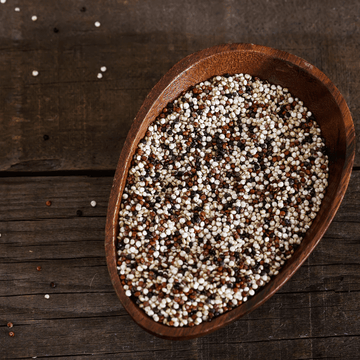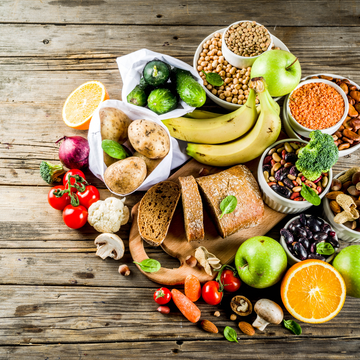Quinoa: Unveiling the Nutritional Value and Health Benefits of This Ancient Grain
by Namita Satheesh on Nov 10, 2023

Introduction to Quinoa
|
Quinoa is a versatile and nutritious pseudo-grain that has gained popularity in recent years due to its numerous health benefits and culinary versatility. Although often referred to as a grain, quinoa is technically a pseudo-grain because it is not a member of the grass family like wheat or rice. It is native to the Andean region of South America and has been cultivated for thousands of years by indigenous peoples. Nutrition: Quinoa is a nutritional powerhouse. It is a complete protein, containing all nine essential amino acids, making it an excellent plant-based protein source for vegetarians and vegans. Additionally, quinoa is rich in dietary fiber, which aids in digestion and helps maintain a healthy digestive system. It is also a good source of minerals such as magnesium, iron, and phosphorus, as well as vitamins B and E. Per 100 grams, quinoa (cooked) has the following approximate nutritional composition: Calories: Approximately 120 calories Carbohydrates: Around 21 grams Protein: Roughly 4 grams Fat: Approximately 2 grams, predominantly healthy unsaturated fats Fiber: Approximately 2.5 grams |
Why is it called a pseudo-grain?
Quinoa is called a pseudo-grain because it is technically not a true grain. Whole grains like wheat, rice, and corn come from grass plants, and quinoa comes from a plant species called Chenopodium quinoa. Despite not being a member of the grass family, quinoa's edible seeds are used similarly to traditional grains, hence the term "pseudo-grain."
Health Benefits:
Quinoa offers numerous health benefits. Its high protein content makes it a valuable addition to vegetarian and vegan diets, aiding in muscle repair and growth.
1 . The fiber in quinoa supports healthy digestion and may help reduce the risk of constipation.
2. Quinoa is also naturally gluten-free, making it a suitable alternative for individuals with gluten sensitivities or celiac disease.
Moreover, the antioxidants present in quinoa may help protect against chronic diseases and inflammation.
Millet and quinoa are both nutritious grains that offer unique characteristics. Millet is a small-seeded grain that is highly versatile and can be used in various dishes, similar to quinoa. However, unlike quinoa, millet is not a complete protein and lacks certain essential amino acids. On the other hand, quinoa provides a complete protein profile and has a slightly nutty flavor, making it a popular choice for health-conscious individuals.




